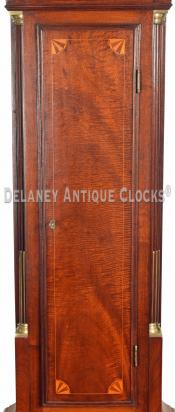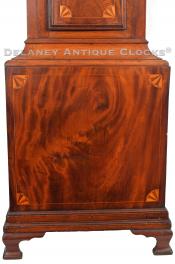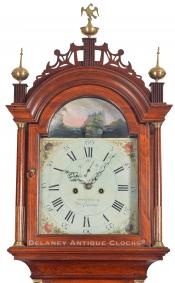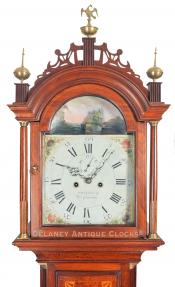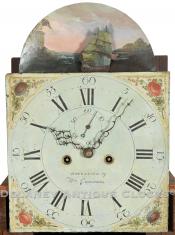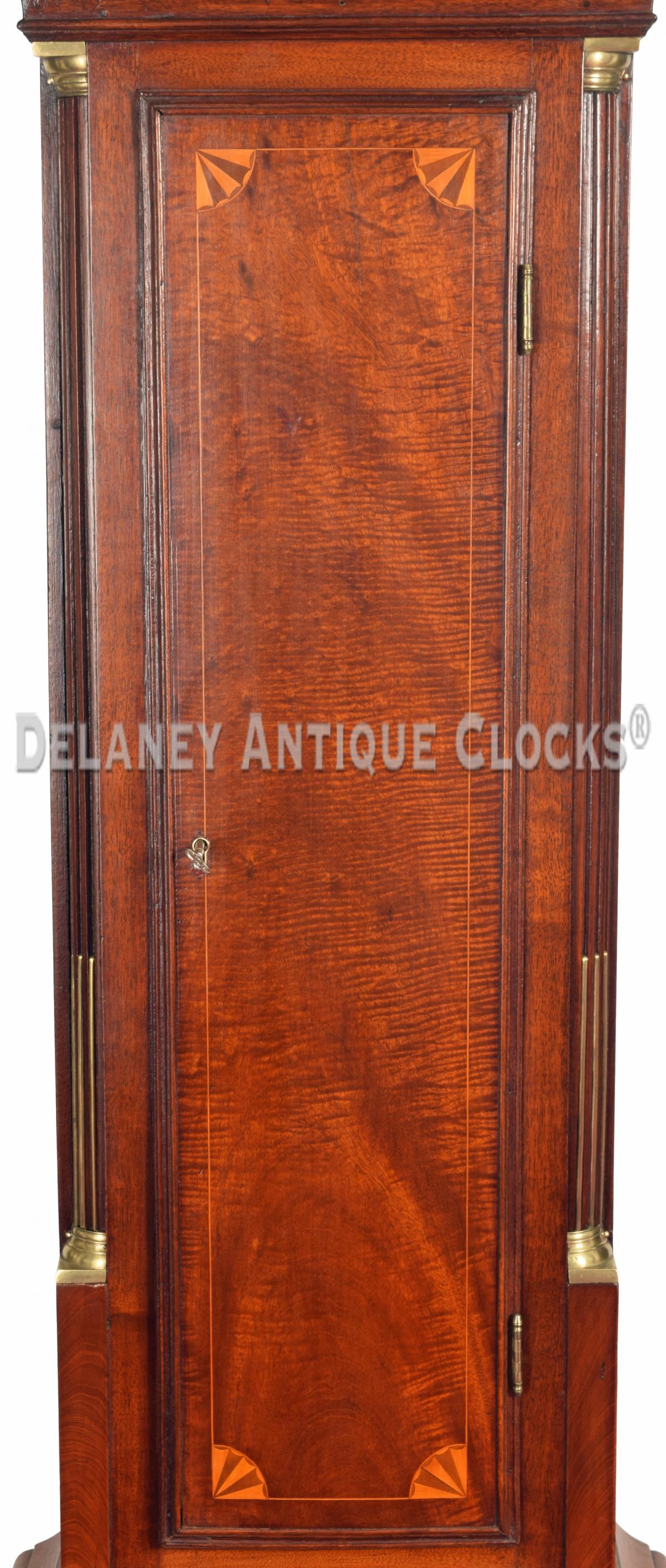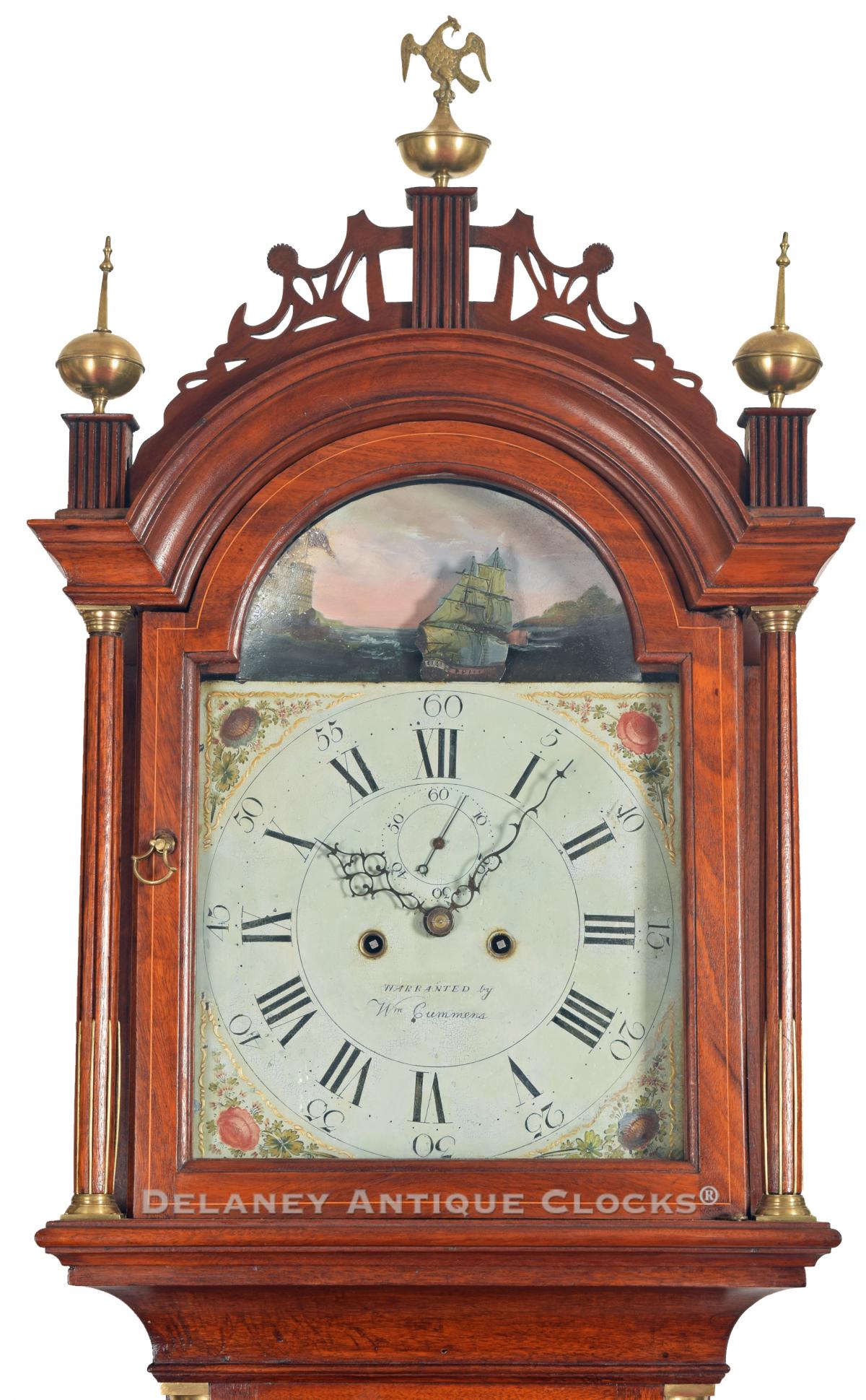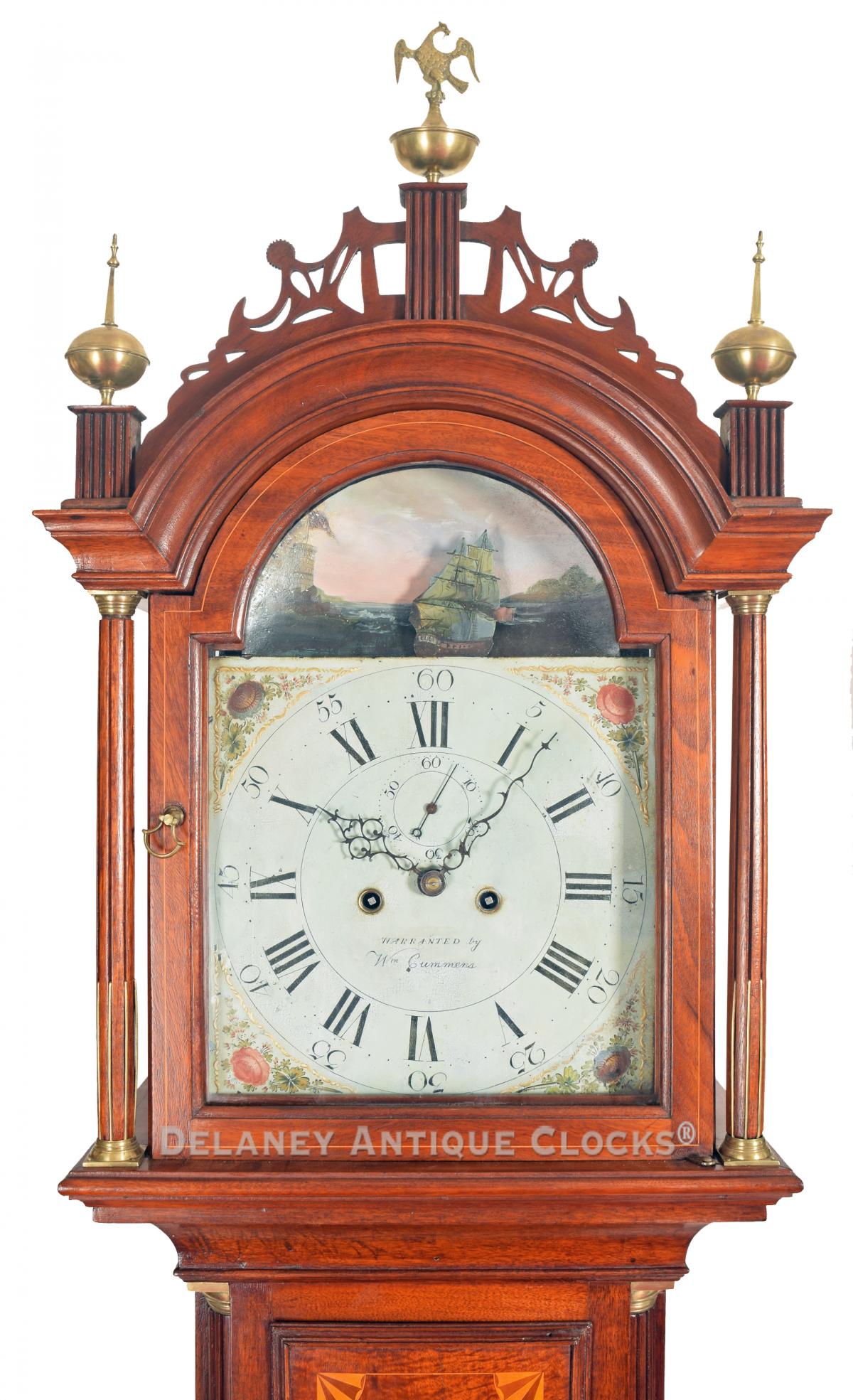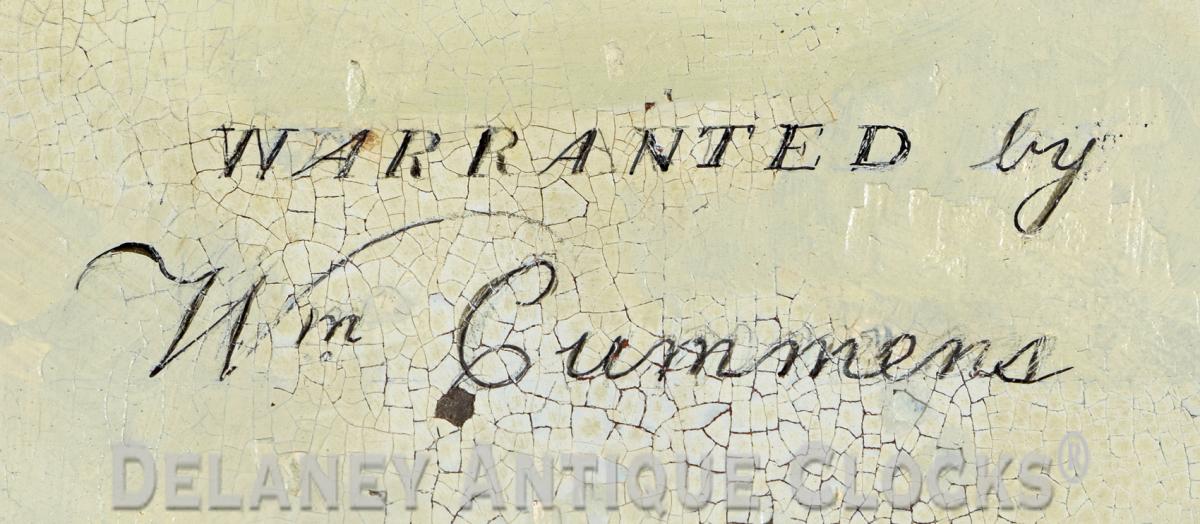William Cummens of Roxbury, Massachusetts. An inlaid mahogany case of the finest proportions and veneers featuring an automated rocking ship dial. Captain George Coggeshall's clock. 219027.
Family history records that this clock was originally owned by Captain George Coggeshall, who eventually became the owner of the ship named the Magnet. Lucy Coggeshall married George Coggeshall. George died in Havana on June 12, 1812, at the at of 25 years old. She remarried Col. Samuel Wardwell on November 23, 1817. Wardwell was a charter member of the Bristol Train of Artillery, formed in June 1794. He and William De Wolf, Samuel V. Peck, and John Bradford. The first election of Officers was held on April 7, 1796, when Samuel Wardwell was chosen as Captain. He had the militia rank of Lieutenant Colonel. Lucy died on March 14, 1844. She was 86 years old and is buried in the Old East Burial Ground in Bristol, RI. The clock remained in the Coggeshall family until 1927, when it was given to Frederick Nelson Palmer.
This is an outstanding case. It features line inlays, cross-banding, and highly figured mahogany veneers. This tall case exhibits excellent proportions, superb wood selections, and a painted rocking ship dial that is signed by the Roxbury, Massachusetts Clockmaker, William Cummens.
William Cummens was born in 1768 and died on April 20, 1834, at the age of 66. He worked in Roxbury from 1789 through 1834. Along with Elnathan Taber, Simon Willard trained William Cummens as a clockmaker. After serving his apprenticeship, Cummens stayed in Roxbury and made many clocks. He had direct access to the same suppliers the Willards used, such as case makers and dial painters like Spencer Nolen. As a result, Cummens' clocks are very similar in form. Over the last 48 years in business, we have owned and sold many tall case clocks, Massachusetts shelf clocks, and wall timepieces made by this Maker.
This is a very handsome example. The case exhibits first-rate choices of mahogany and mahogany veneers. All of these were selected for their strong grain pattern and formatted in a manner to command your attention. It is decorated with line inlays and multiple quarter fans. The current shellac-based finish is modern, and it accentuates the deep rich color. This example stands on four nicely formed applied ogee bracket feet. These are applied to a double-stepped molding that is attached to the base. The base panel is wonderfully figured. It is also decorated with a delicate line inlay that forms a box or conforms to the square shape of the base. In each corner is a quarter fan. This complex design has four individual blades that alternate in light and dark colors. The wide ends are capped in ovals that also alternate in color. This fan design is also used in the decorative formatting of the long rectangular-shaped waist door. This door is also trimmed with an applied molding. The veneer selected for this location has a grain pattern that is best described as a tiger pattern. This is a fantastic selection of veneer. Through this door, one can access the original tin can drive weights and the brass-faced pendulum bob. The bob is supported by a metal rod. Brass-stopped fluted quarter columns flank the waist. These terminate in brass quarter capitals. The bonnet columns are also stopped-fluted with brass and are fitted into brass capitals. These visually support the molded arch. Above this is a pierced and open fretwork design. It is a traditional New England style pattern incorporating three brass finials that are mounted on fluted chimney plinths. The arched bonnet door is also nicely figured and lined inlaid. It is fitted with glass. It opens to access the painted iron dial.
This 12-inch painted iron features a rocking ship display in the lunette. This automated display is a desirable feature and is difficult to find in the marketplace. The arch or backdrop is slightly concave. This provides the space for the automated ship to move in front of the painted scene. The scene depicts a fortification on the left. A warship under sail is entering the inlet. The ship moves in a side-to-side motion. This is driven by the pendulum. This automated display was a desirable feature and was most likely a special order. Gilt designs, some of which are elevated on applied gesso decorations, are positioned in each of the four spandrel areas. Inside these are colorful florals. The time ring is formatted with Roman-style numeral hour markers. Arabic numerals are used to mark each of the five-minute positions. The hands are hand filed with a high level of skill. A subsidiary seconds dial can be viewed inside the time ring in its traditional location. This dial is signed by the Maker, "WARRANTED by / Wm. CUMMENS."
This fine movement is constructed in brass and is of good quality. Four-turned pillars support the two brass plates. Hardened steel shafts support the polished steel pinions and brass gearing. The winding drums are grooved. The escapement is designed in a recoil format. The movement is weight driven and designed to run for eight days on a full wind. It is a two-train or a time-and-strike design having a rack and snail striking system. As a result, it will strike each hour on the hour. This is done on a cast iron bell which is mounted above the movement.
This clock was made circa 1795 and stands approximately 8 feet tall or 96 inches tall, 21 inches wide, and 10 inches deep.
Inventory number 219027.
William Cummens was born in 1768 and died on April 20, 1834, at the age of 66. He worked in Roxbury as a clockmaker as early as 1789. He was trained by Simon Willard, along with Elnathan Taber, Cummens stayed in Roxbury and worked alongside the Willard clockmaking family for many years. Based on the large number of clocks that have survived, they must have had an excellent relationship with one another. In this Roxbury location, Cummens had direct access to the same suppliers, such as case makers and dial painters, that the Willard family used. As a result, his clocks are nearly identical in form. Cummens was one of the first persons authorized by Simon Willard to manufacture the new Willard Patent Timepiece. Over the past 55-plus years of being in the business of buying and selling clocks, we have owned and sold a substantial number of tall case clocks, Massachusetts shelf clocks, and wall timepieces signed by this important clockmaker.



